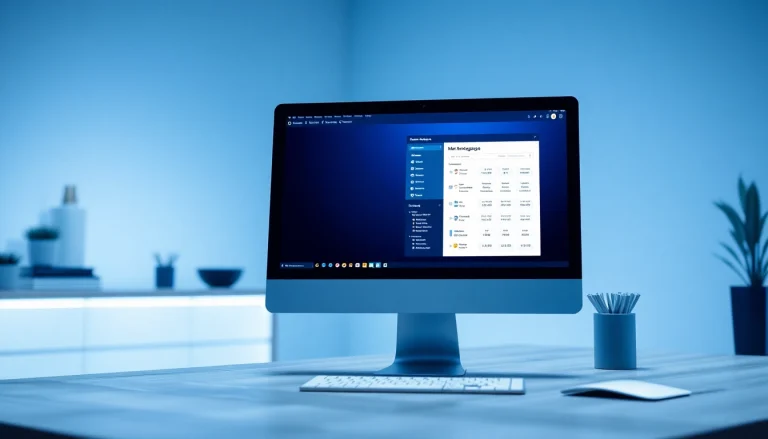
Understanding the Basics of Chainlink vs Quant
Definitions and Core Functions
Blockchain technology has revolutionized the way we view data management and transactions. Two of the most notable projects emerging from this space are Chainlink and Quant. While both serve distinct purposes, their contributions are significant in shaping future blockchain implementations. Chainlink focuses on providing reliable data feeds to blockchain environments through its decentralized oracles, enabling smart contracts to interact with off-chain data effectively. In contrast, Quant provides an interoperability solution through its Overledger technology, allowing various blockchains to communicate and collaborate seamlessly.
As blockchain applications become more complex, the need for reliable infrastructure becomes vital; thus, understanding chainlink vs quant is essential for developers, investors, and stakeholders alike.
Key Differences and Use Cases
At a fundamental level, Chainlink and Quant serve two different aspects of blockchain technology. Chainlink acts primarily as a data conduit, allowing smart contracts to access real-world data in a secure and decentralized manner. This is particularly beneficial for applications like finance, insurance, and supply chain logistics, where off-chain data is critical for executing contracts accurately.
On the other hand, Quant addresses the challenge of interoperability between blockchains, enabling different networks to communicate. This potential is significant for industries that require multi-chain integration, such as decentralized finance (DeFi) and identity verification solutions. Understanding these distinct profiles allows developers to choose resources suited to their specific project needs.
Importance of Interoperability in Blockchain
The blockchain ecosystem is extensive, with thousands of various platforms operating independently. However, this fragmentation can be a double-edged sword; while it fosters innovation, it also limits the potential of existing networks. Interoperability — the ability of various blockchains to work together — becomes crucial in overcoming these limitations. Quant’s vision of a connected blockchain landscape enhances efficiency, reduces redundancy, and can potentially drive broader adoption across sectors that utilize blockchain solutions.
Technical Insights: Chainlink vs Quant Architecture
Chainlink’s Oracle Infrastructure Explained
Chainlink’s architecture hinges on decentralized oracles — services that provide reliable off-chain data to on-chain smart contracts. These oracles are essential in bridging gaps between real-world information and on-chain executions. Chainlink uses a unique approach, incorporating multiple data providers to reduce single points of failure and enhance reliability.
The protocol employs a reputation system that incentivizes data providers for accurate information while penalizing incorrect reporting. This structure not only ensures high-quality data delivery but also builds trust among users and developers reliant on the Chainlink network.
Quant’s Overledger Technology Breakdown
Quant’s Overledger is designed to foster interoperability among various blockchain networks. Unlike traditional approaches, which often require complex coding or replacements, Overledger enables the integration of multiple blockchains through a simple interface. This design supports commonly used programming languages, allowing developers to create multi-chain applications without needing to understand the underlying blockchain specifics.
Quant orchestrates transactions across disparate chains through “gateways,” which serve as access points for users to interact with various blockchain environments collectively. This facilitates the creation of decentralized applications (dApps) that leverage the strengths of multiple blockchain networks simultaneously.
Analyzing Performance and Scalability
When discussing the technical capabilities of Chainlink versus Quant, performance and scalability are vital areas of consideration. Chainlink’s decentralized oracle networks are designed to efficiently scale with demand. As more decentralized applications are built on platforms like Ethereum, Chainlink adapts by expanding its node network and increasing the number of data sources.
Quant, meanwhile, offers significant advantages in scalability via Overledger. By enabling data exchange between different blockchains, Quant scales itself by facilitating myriad transactions across networks concurrently. The solution is particularly effective in environments where diverse applications need to interact without facing the usual challenges associated with cross-chain communication.
Market Positioning and Adoption Trends
Current Market Cap and Value Comparisons
Assessing the market positioning of Chainlink and Quant reveals critical insights into their adoption and utility in real-world applications. As of the latest figures, Chainlink maintains a strong market cap, often ranking among the top cryptocurrencies globally. This is reflective of its utility in powering decentralized finance, particularly in lending protocols, stablecoins, and insurance applications.
Quant, while not as widely recognized as Chainlink, has shown impressive growth. Its unique value proposition of interoperability appeals to developers looking to create complex networks. As the demand for interconnected blockchain solutions rises, the market cap of Quant has also seen a steady upward trajectory, attracting investor interest.
User Base Demographics and Growth
The demographics of users investing in or utilizing Chainlink versus Quant can differ significantly. Chainlink has found widespread adoption among DeFi platforms, making it indispensable for projects in the Ethereum ecosystem. This user base primarily comprises developers, investors, and financial institutions looking to leverage decentralized data feeds.
Conversely, Quant targets enterprises and developers engaged in multi-chain initiatives. Users appreciate Overledger as it simplifies the development of applications requiring interactions across different blockchain environments. The growth appears to be driven by increasing industry recognition of the necessity for interoperability, which aligns with current blockchain trends.
Industry Trends Impacting Future Development
The blockchain sector experiences rapid evolution, shaped by a variety of industry trends. One key trend is the growing demand for decentralization, as businesses and consumers seek more control over their data. Chainlink’s technology complements this trend by ensuring smart contracts operate with verifiable off-chain data.
Simultaneously, the rise of the Internet of Things (IoT) and artificial intelligence (AI) calls for seamless data transfer across platforms, an area where Quant’s interoperability can shine. As more devices and systems connect to the blockchain, the need for solutions that facilitate cross-chain communication will only amplify.
Potential Integration Scenarios for Blockchain Developers
How to Implement Chainlink in Your Projects
For developers looking to integrate Chainlink into their projects, the process begins with understanding the data needs of their smart contracts. Choosing appropriate data providers based on the project requirements is crucial. Developers can start by interacting with Chainlink’s extensive documentation, which provides step-by-step guides and best practices for implementation.
In practice, integrating Chainlink involves deploying oracles that fetch data from external sources and deliver it to Ethereum-based smart contracts. This connection allows developers to program contracts that respond automatically to real-world events, thereby enhancing the functionality and reliability of their applications.
Utilizing Quant for Cross-Chain Solutions
To implement Quant’s Overledger in blockchain projects, developers start by creating an Overledger application that connects to different blockchains simultaneously. The process leverages APIs that allow developers to write code in familiar programming languages while straightening the complexity of blockchain-specific languages.
By constructing applications to take advantage of Quant’s interoperability, users can develop dApps that function across networks without heavy modifications, significantly easing the entry barriers for multi-chain development. This flexibility positions Quant as an attractive option for developers targeting diverse user bases across hybrid blockchain ecosystems.
Case Studies of Successful Applications
Real-world applications of Chainlink and Quant highlight their efficacy and contribute to their credibility within the blockchain community. Chainlink has powered numerous decentralized finance applications that rely on its oracles to engage with secure and reliable off-chain data. For instance, several lending protocols utilize Chainlink to ascertain the real-time price of assets, allowing for precise curation of user experiences and security of transactions.
In contrast, applications utilizing Quant’s Overledger focus on bridging organizational silos by integrating multiple blockchains. Enterprises that adopt these solutions benefit from heightened flexibility in managing cross-platform functionalities, thus promoting efficiency and enhancing security protocols.
Looking Ahead: The Future of Chainlink vs Quant
Predictions for Market Trends and Technology Evolution
As the blockchain landscape evolves, both Chainlink and Quant are likely to play pivotal roles in how decentralized functionality develops across industries. The demand for reliable data feeds will continuously increase in sectors like finance, healthcare, and logistics, hence making Chainlink’s services invaluable.
For Quant, the ongoing push towards digital transformation across businesses emphasizes the need for adaptable technology that facilitates interoperability among blockchains. Expectations are that more enterprises will adopt such technologies to enable agility and responsiveness in their operations.
Challenges and Opportunities for Growth
Both projects face inherent challenges as they scale to meet rising demand. For Chainlink, competition from other data solutions may increase, leading to price pressure or necessitating further innovation within the oracle framework. Maintaining a high standard for its oracle network will be crucial for continued success.
Quant, grappling with a less recognized brand, must solidify its position within the blockchain community. As firms seek blockchain-as-a-service offerings, Quant must communicate its unique benefits effectively to reach a broader audience while developing partnerships that extend its reach.
Expert Opinions and Insights on Future Developments
Industry experts express optimism for both Chainlink and Quant. The consensus is that Chainlink could remain the go-to solution for secure off-chain data, especially within the DeFi landscape. At the same time, Quant is broadly recognized for filling the vital demand for blockchain interoperability, ensuring that disparate networks can work together harmoniously.
Analysts suggest that, together, both technologies can pave the way for an interconnected blockchain future, where seamless interaction and data integrity prevail. As newer projects emerge, those leveraging the strengths of Chainlink and Quant are expected to drive forward innovative solutions that harness the best of both ecosystems, ultimately enriching the blockchain landscape.






